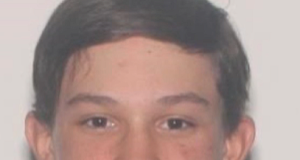On December 13, as thousands of protesters mobbed the New York streets, Yuseff Hamm, an NYPD police officer, was monitoring the demonstrations from a mobile command unit near the Brooklyn Bridge. As the protest drew near, Hamm and his fellow officers could hear the chants of the noisy throngs: "What do we want? Dead cops. When do we want them? Now."
In his 13 years on the force, Hamm had never encountered demonstrators shouting out anything like that.
Nor had he ever seen anything like what happened one week later, on Saturday: a lone gunman, hours after warning on Instagram that he planned an attack in retribution for U.S. police killings of black men, gunned down two NYPD officers as they sat in a cruiser in broad daylight near a bustling intersection in Bedford Stuyvesant, Brooklyn.
The officers, who were Hispanic and Asian-American, were killed by a 28-year-old black man, Ismaaiyl Brinsley. He had traveled to New York from Baltimore, where he had earlier shot and wounded his girlfriend. Brinsley fled and later used his silver semi-automatic handgun to take his own life by shooting himself in the head on a crowded subway platform.
"When you have a chant going on like that, and no one addresses it, and then a week later, these killings come to fruition, I'm shaken," said Hamm, an African American, whose usual stint is in the conditions unit in the 106th precinct in Queens. "The rhetoric that's going around, left unchecked, is very dangerous, and it invites people to do crazy nonsense."
The killing of the two police officers Saturday comes at a time when police in New York already feel vulnerable. A wave of national protests has targeted them for what demonstrators have characterized as their "aggressive" and "extreme" tactics. That includes the controversial "stop and frisk" program, in which thousands of black and Latino men were targeted for no ostensible reason other than the color of their skin.
Though the protests have been largely peaceful, tensions have been escalating, with people brandishing placards reading "NYPD KKK," "NYPD Has Blood on Their Hands" and "Speak Up Get Shot."
Defenders of the actions, however, say that drawing a connection between the protests and the police killings would be "misleading."
One of the movements leaders, the Missouri-based Ferguson Action Network, said in a statement: "Millions have stood together in acts of non-violent civil disobedience, one of the cornerstones of our democracy. It is irresponsible to draw connections between this movement and the actions of a troubled man who took the lives of these officers and attempted to take the life of his ex-partner, before ultimately taking his own."
The nationwide wave of protests, which have snarled traffic, clogged bridges and brought commerce to a standstill, started in late November after a Missouri grand jury declined to indict a white police officer in the killing of unarmed black teen Michael Brown. A week later, a New York grand jury also declined to indict a white officer in the chokehold death of Eric Garner, an unarmed, 43-year-old black father of six suspected of peddling loose, untaxed cigarettes.
In the wake of those decisions, New York Mayor Bill de Blasio, whose wife Chirlane is African American, said in a press conference that the couple has had to have painful conversations with their biracial son, Dante, about "how to take special care with any encounter he may have with police officers."
Police organizations immediately blasted the mayor's comments as anti-cop. On Saturday, Patrolmen's Benevolent Association President Patrick Lynch said, "The blood on the hands starts on the steps of City Hall, in the office of the mayor." That same night, as the Mayor arrived at the Brooklyn hospital where the two dead officers were taken, a line of patrolmen turned their backs on him, forming a line of blue in what observers called a dramatic show of disrespect.
During his campaign, de Blasio criticized NYPD tactics like "stop and frisk" and the "broken windows" theory of policing, which focuses on cracking down on small crimes to prevent bigger ones. Both strategies flourished under de Blasio's predecessors, Rudy Giuliani and Mike Bloomberg. Both Mayors oversaw a record drop in crime which transformed New York from the former murder capital of the world into the safest big city in America-and the preferred playground of the global elite.
But now, police say the tension between the NYPD and the Mayor's Office at City Hall is the worst it has been in recent memory.
On Sunday, police officers said that more and more of them were signing a new petition asking de Blasio not to attend their funerals if they should die in the line of duty.
"This is a very, very volatile time," said a 15-year narcotics vet who asked not to be named because police officers are prohibited from speaking with the press without department permission. "Any situation on either side in this city could really set things off. It really could."




